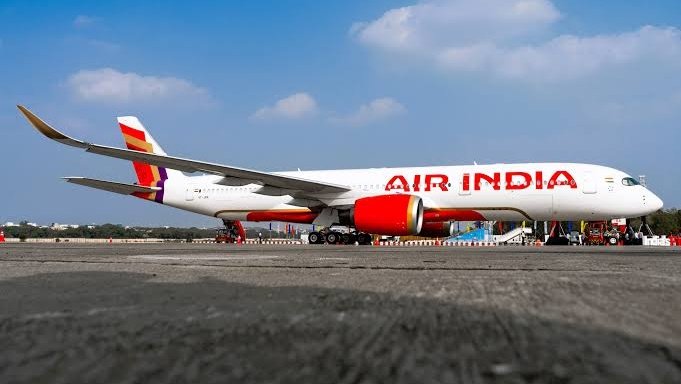Back-to-back mid-air technical failures raise urgent questions about India’s flagship airline
India’s aviation sector has been riding high with growing air traffic, new international routes, and upgraded terminals. But beneath that glossy narrative, a darker reality returned to the spotlight this week — a series of technical failures involving Air India aircraft, which left hundreds of passengers stranded, scared, and asking tough questions.
In less than 24 hours, two Air India-operated flights faced serious mid-air and engine-related issues, prompting emergency diversions and abrupt deboarding. The incidents — one involving an Air India Express flight from Delhi to Ranchi, and another involving the long-haul San Francisco to Mumbai flight via Kolkata — have not resulted in injuries, but they’ve triggered renewed fears about aircraft maintenance, operational preparedness, and regulatory oversight.
Delhi–Ranchi U-turn and Mumbai Flight Halt Expose Air India’s Mid-Air Mayhem
Early this week, an Air India Express flight operating from Delhi to Ranchi was forced to return mid-air shortly after takeoff. Though the airline described it as a “precautionary measure” after a suspected technical glitch, the unscheduled landing sparked concern among passengers, many of whom shared videos and photos online once safely back in Delhi.
📢 Air India flight AI 9695 from Delhi to Ranchi DIVERTED mid-air back to Delhi due to TECHNICAL GLITCH.
— The Analyzer (News Updates🗞️) (@Indian_Analyzer) June 16, 2025
~ Took off at 4:25 PM, was scheduled to land at 6:20 PM at Birsa Munda Airport.
Another day, another diversion. What’s happening with Aviation Sector? 🤯 pic.twitter.com/RDB2pM4dmD
The airline confirmed that the aircraft was inspected, cleared, and returned to service, but aviation analysts argue that such recurring “minor technical glitches” are often symptoms of deeper, systemic issues — from outdated aircraft components to insufficient turnaround time for servicing.
As one aviation analyst put it, “It’s always a warning shot. If you’re frequently having to turn flights around mid-air, something in the maintenance chain is broken.”
Just hours after the Delhi-Ranchi flight returned to base, a separate Air India long-haul service from San Francisco to Mumbai hit a technical snag during its scheduled stop in Kolkata. According to airline officials and media reports, a left engine issue was detected, forcing the crew to halt the flight and deboard all passengers safely.
#BREAKING
— Nabila Jamal (@nabilajamal_) June 17, 2025
Another Air India jet grounds in Kolkata over engine snag
Air India flight AI180 from San Francisco to Mumbai faced technical snag in its left engine during a scheduled halt at Kolkata
Boeing 777-200LR landed on time at 12:45am, but passengers were made to wait… pic.twitter.com/DMDrduXg2P
The passengers had already completed the 16-hour transatlantic leg of the journey. But instead of reaching Mumbai, they were held up in Kolkata as technicians inspected the aircraft. While safety was not compromised, the lack of clarity, delays in communication, and long wait times left many passengers frustrated and exhausted.
These two incidents have once again thrown Air India’s post-privatisation overhaul into the spotlight. Despite being under the Tata Group’s control and a massive fleet revamp underway, the airline continues to struggle with airworthiness issues, scheduling challenges, and growing public scrutiny.
Why Back-to-Back Flight Failures Signal a Deeper Crisis in India’s Aviation Ambitions
It’s easy to chalk these back-to-back failures as isolated incidents, but aviation regulators aren’t buying that narrative. The Directorate General of Civil Aviation (DGCA) has initiated a detailed safety review, with particular attention to Air India’s fleet servicing practices and pre-flight inspection protocols.
Former aviation officials have warned that India’s aviation growth may be outpacing its infrastructure and maintenance capacity. “You can add new routes and planes, but unless your engineering base and safety culture grow alongside, you’re inviting disaster,” said one retired DGCA official.
Air India now faces pressure not just from passengers, but also from investors and global aviation bodies to show tangible improvements — and fast. With India on the verge of becoming the world’s third-largest aviation market, the tolerance for such glitches is rapidly shrinking.
While no one was harmed in either incident, the reputational damage to Air India is real. Frequent flyers are jittery. Watchdogs are circling. And for an airline trying to rebuild itself into a global brand under the Tata banner, such back-to-back technical failures are more than a PR hiccup — they’re a credibility crisis.
It’s time for India’s most iconic airline to not just aim for the skies, but also ensure every takeoff is as safe as its promises.





















